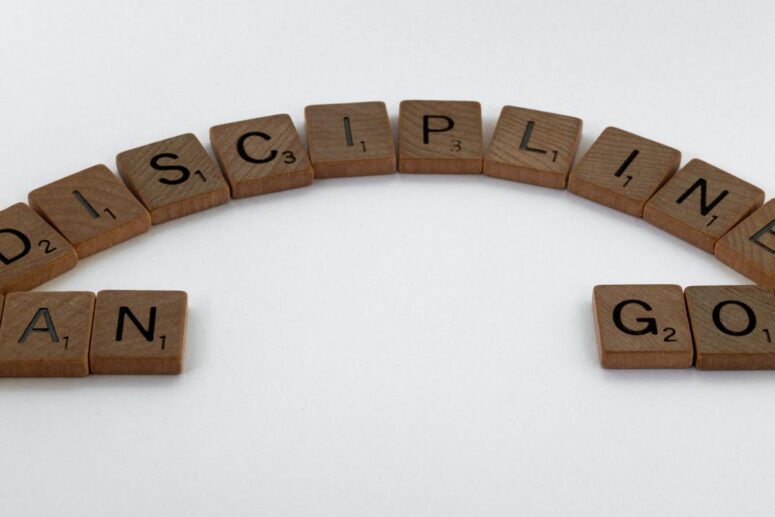
Table of Contents
As a parent of an autistic child, you may be facing unique challenges when it comes to discipline.
Children with autism spectrum disorder often display undesired behaviors that are difficult to control, and it may take a lot of time and patience to correct them. ABA therapy at home can provide best support in managing these behaviors effectively.
In this article, we explain the most common autism-related behavior problems and offer useful tips on how to discipline your child.
What is Discipline?
Discipline is a term used to describe the methods and strategies that parents use to guide their children’s behavior and help them learn appropriate ways to interact with the world around them. For parents of children with autism, discipline can be particularly important in helping their child develop social skills, communication skills, and self-control.
It’s important to remember that discipline should always be done in a loving and supportive manner. Children with autism may have difficulty understanding social cues and may become overwhelmed by intense emotions, so it’s important to approach discipline with patience and empathy.
Challanging Behaviors seen in children with autism
Children with autism typically display a range of challenging behavioral issues. The first step in correcting unwanted behaviors is to understand why they occur in the first place.
Before disciplining your child with autism, it is essential to determine whether the child is misbehaving or the behavior is related to the autism diagnosis. For example, if your child frequently throws tantrums when given instructions, it may be due to their sensory overload or their inability to handle unfamiliar or unexpected situations.
Read on to find out more about the common behavioral issues in autistic children and how to deal with them.
Obsessive behaviors
One of the main characteristics of autism is engaging in obsessive behaviors. Your child may show excessive interest in a particular object, toy, or TV show and become upset if you ask them to move on to a different activity. Most autistic children are resistant to transitions, which makes it even more challenging for parents to control obsessive behaviors.
What you can do
To help your child disengage from an activity, try giving them several reminders well in advance. This will make the transition to a new situation easier.
You can also use the object of your child’s obsession to motivate good behavior. For instance, a child who loves numbers can use them to learn to identify and communicate emotions. These downloadable cards use the numbers to help children with autism describe their feelings and learn new coping strategies.
Aggressive behaviors
Children with autism often display aggressive behaviors towards parents and caregivers, such as hitting or throwing and breaking objects.
What you can do
Always put the safety of your child first. If your child becomes aggressive, remove them from the situation that is emotionally or physically unsafe for them or others as quickly as possible.
Let your child calm down before you explain that aggression is not acceptable. At the same time, you should suggest alternative behaviors that can help your child deal with frustrations. For example, if your child always hits you to get your attention, you can work on replacing that behavior with a more appropriate one such as tapping your shoulder or asking for help.
Physical tantrums
Tantrums in children with autism are rarely a sign of misbehavior. While temper tantrums in neurotypical children are motivated by a desire to obtain something, autistic meltdowns are impulsive without any reasoning behind them. For example, an autistic child may throw a tantrum because he or she has difficulties dealing with a sensory overload or an unexpected situation.
What you can do
Take your child away from the situation and explain that their behavior is not acceptable. It often helps to have a sensory toy such as a fidget on hand to help your child calm down.
Self-injury
In addition to being aggressive toward others, some autistic children also resort to self-harm that may consist of excessive scratching, head banging, and hand biting. Sometimes, self-injury is the only way for an autistic child to deal with stress and anxiety.
What you can do
It is important to manage non-negotiable behaviors like self-injury, harming others, and damaging things. If your child shows tendencies toward self-injury, it is advisable to consult your pediatrician or applied behavior analysis specialist as soon as possible. They will help you develop a safety intervention plan according to the severity of your child’s behavior.
Not sitting still
Attention deficit is one of the main symptoms of autism. Many children with autism spectrum disorder have sensory processing issues that can make it challenging to sit still and concentrate.
What you can do
To help your child focus on an activity, make sure to provide short, simple, and specific instructions. This will prevent them from feeling overwhelmed. Don’t forget to offer praise and reward your child’s efforts.
Not following instructions
Children with autism can feel overwhelmed if you ask them to do several tasks at once or to follow complicated instructions. They may refuse to do something, for example enter a noisy or crowded room, due to their sensory sensitivities.
What you can do
Start by providing simple directions so that over time, you can gradually ask your child to follow more complex instructions. Always give positive directions and tell your child what to do, for example “put your book on the table” instead of “don’t put your book on the floor.” It is also important that instructions are appropriate for your child’s communication level so that they can understand what is expected from them.
Social issues
Most children with autism spectrum disorder are not able to grasp the emotions of other people and the nuances of social interactions, such as gestures and facial expressions. Aggression may be an indication of their anxiety or frustration with social and communication difficulties.
What you can do
You can teach your child about the rules of social interactions using social stories or visual schedules. These tools will clearly show your child what behaviors are expected in different situations and break those behaviors into simple steps.
Techniques for Disciplining Your Autistic Child
Disciplining an autistic child is certainly challenging but it is essential for helping your child learn appropriate behaviors, understand and manage emotions, and get along with others. Although traditional discipline techniques may not always work for autistic children, strategies such as positive and negative reinforcement can be successfully used to modify unwanted behaviors.
Positive reinforcement strategies
Positive reinforcement strategies consist in rewarding your child’s appropriate behaviors. A reward can be anything from a toy, a sticker, or a preferred activity to praise and attention. It will help your child to associate the desired behavior with a positive outcome and motivate them to keep behaving well. Research suggests that children with autism respond well to discipline techniques that use positive reinforcement strategies.
Things to keep in mind
- In order to be effective, the reward or praise for your child’s positive behavior has to be concrete and immediate.
- Make sure to describe the aspect of the child’s behavior that you are trying to encourage, for example: “you did well to stay calm even if you had to stop watching the show.”
- If your child has limited verbal skills, you may need to adapt your communication to their abilities and use simple language and visual aids.
- Keep in mind that some autistic children don’t respond well to praise. For example, a child who regularly withdraws from others will not be motivated to behave in a certain way just to please someone else.
- Depending on your child’s preferences, you can use visual schedules, token boards, or sticker charts as a form of positive reinforcement. These tools will convey your expectations more clearly and at the same time serve as a visual record of their progress.
Negative reinforcement strategies
Negative reinforcement is another effective strategy of disciplining autistic children, including those who have significant behavioral issues. Negative reinforcement—a method that is not to be mistaken for punishment—refers to removing an unwanted element from the environment to create the desired behavior.
For example, your child may be scared by the sound of hand dryers in public restrooms and become disruptive when they hear them. You can decide to stop taking your child to public restrooms in order to avoid the problem, however, this will only reinforce the unwanted behavior. On the other hand, you can equip your child with noise-canceling headphones so that they don’t become distressed when they hear the noise. This is an effective form of negative reinforcement because it removes the “aversive stimulus,” that is, something your child is trying to avoid.
Things to keep in mind
- The child who engages in an undesirable behavior should not be allowed to get something out of it. For example, if your child throws a tantrum to get candy, you should not give in just to stop the behavior. Incorrect use of negative reinforcement can encourage behaviors you’re trying to correct.
- Consistency is the key when it comes to negative reinforcement techniques. In other words, it is important to follow through with your strategy. Autistic children often prefer structured discipline and they do much better when the outcome of a situation is predictable.
outline rules and expectations for your child
For children with autism, having clear rules and expectations is crucial for their development and well-being. Children with autism often struggle with social and communication skills, which can lead to misunderstandings and difficulties in understanding the rules of social interactions. By outlining rules and expectations in a clear and consistent manner, parents can provide structure and predictability for their child, which can help them feel more secure and confident in their interactions with others.
Clear rules and expectations can also help children with autism develop self-control and self-regulation skills. Children with autism may have difficulty understanding the impact of their behaviors on others, and may struggle with impulsivity and emotional regulation. By providing clear rules and expectations, parents can help their child understand what is expected of them in different situations, and provide them with a framework for making appropriate decisions and managing their emotions.
Teach Self-Calming Techniques
Self-calming techniques can be an effective tool for disciplining an autistic child by helping them regulate their emotions and behavior. Many children with autism struggle with sensory processing and may become overwhelmed by sensory input in their environment, leading to emotional outbursts and challenging behavior.
Self-calming techniques, such as deep breathing, mindfulness, and sensory activities, can help children with autism learn to manage their emotions and sensory input in a more effective way. By providing a safe and calming outlet for their emotions, children with autism can learn to self-regulate and manage their behavior in a more appropriate manner.
In addition to helping with emotional regulation, self-calming techniques can also promote a sense of empowerment and autonomy in children with autism. By learning how to manage their emotions and behavior independently, children with autism can develop a greater sense of control over their lives and their interactions with others.
ABA therapy can with discipline
Applied behavior analysis (ABA) therapy is the most effective form of autism treatment. ABA therapy techniques are successfully used in disciplining autistic children by changing unwanted behaviors and reinforcing desirable ones. ABA can help your child learn skills such as:
- Learning how to avoid negative responses or behaviors
- Learning the acceptable alternative behaviors
- Learning how to communicate anger and other emotions in an acceptable manner
- Learning the coping skills for emotional regulation
- Learning appropriate social interactions and communication.
How does it work?
ABA therapy generally relies on positive reinforcement strategies to encourage behavioral changes. When the desired behavior of an autistic child is immediately followed by a reward, such as a special toy or preferred activity, the child is more likely to repeat the action in the future.
ABA therapy sessions consist of a combination of play, fun activities, direct instructions, video modeling, adaptive skills training, and parent guidance. The therapist will break down the essential skills that you want your child to learn into small steps and then build toward more significant changes over time. It is important to keep in mind that ABA is a long-term treatment and your child may require anywhere from 25 to 40 weekly hours of therapy to see improvement.
Because each child with autism is different and has unique behavioral challenges, ABA therapy offers targeted intervention based on individual strengths and weaknesses. By understanding the reason behind the unwanted behaviors, the therapist can provide your child with the necessary tools to replace these behaviors with positive ones. The therapist will develop a customized plan with a combination of strategies that are suitable for your child.
For more information on ABA therapy, contact Golden Care Therapy by phone at (732) 402-0297, email at [email protected], or fill out our contact form and we’ll get back to you as soon as possible.
Now that we’ve seen what you can do to change your child’s unwanted behaviors, let’s turn to the methods that should be avoided when disciplining an autistic child.
What Not to Do when Disciplining your Child with autism
Punishment
Punishing a child with autism is an ineffective discipline strategy. Your child may simply not be able to understand the connection between their behavior and the consequence. What’s more, punishment can potentially have negative effects and reinforce the behavior you are trying to reduce.
It is particularly important not to remove your child’s soothing object as a consequence of unwanted behavior. Calming sensory objects like fidget spinners are often essential for helping autistic children deal with stress and relieve tension. These objects should never be associated with punishment.
Physical discipline
Physical punishment is another method that should not be used when disciplining an autistic child. It may temporarily stop the undesirable behavior, but physical discipline won’t show your child what is the correct behavior.
Time out
You should avoid time out as a discipline strategy for your child. Children with autism who appreciate being alone will consider a traditional time out rewarding. They simply won’t be able to understand that this is a negative consequence for their behavior.
Yelling, threatening, and criticizing
Yelling, threatening, and criticizing can be counterproductive and lower the self esteem of your child. The goal of disciplining an autistic child is not to make their negative behavior stop immediately, but rather to provide them with an opportunity to improve by learning from mistakes.
If you are ready to work with the best ABA therapy provider in New York, New Jersey or Indiana, give us a call at (732) 402-0297. Our dedicated team is ready to help and we will treat you like family.
- Autism Routine Disruption in Adults: Coping Tips - July 16, 2024
- Autism and Obsession: An Overview - July 16, 2024
- Autism and Taking Clothes Off: Management Tips - July 16, 2024



